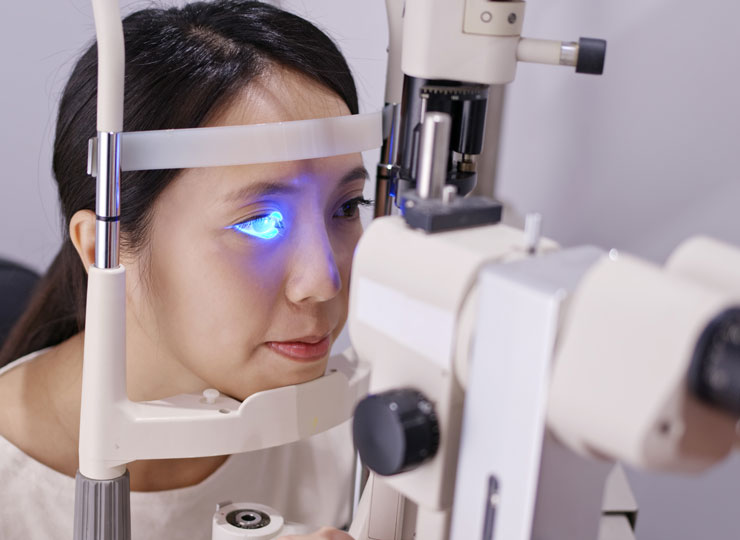
August 19, 2021
Unique eye changes may be an early harbinger of Alzheimer’s disease, two new studies report. The findings could lead to a simple eye test for detecting the earliest stages of Alzheimer’s, before symptoms like memory loss become evident and damage to the brain becomes extensive. Researchers believe that early detection is important, because that may be the time when drugs and other treatments may be most effective in combatting the disease.
In one study, researchers at the University of California, San Francisco, studied 75 older men and women with normal thinking and memory skills. Most were in their 70s. Some carried the APOE-E4 gene variant, which raises the risk for developing Alzheimer’s disease.
The researchers performed scans on their retinas, the light-sensitive layer that lies at the back of the eye. A retinal scan is a biometric technique based on blood vessels, not to be confused with an iris scan. The test assesses capillaries, the tiny blood vessels that carry oxygen and nutrients to different parts of the body. People who carried the APOE-E4 gene variant had a lower density of retinal capillaries, compared to their peers who did not carry the gene variant. Those with reduced blood vessel density in the retina also had reduced blood flow in the brain.
“We still don’t fully understand how the APOE-E4 variant increases risk of brain degeneration, we just know that it does, and that this risk is modified by sex, race, and lifestyle,” said Dr. Fanny Elahi, the study’s lead author.
Earlier research by Dr. Elahi and others has suggested that in the brain, these tiny blood vessels may play a role in the development of Alzheimer’s, since they deliver nutrients and oxygen, carry away waste and modulate immune responses. Damage to these blood vessels could cause a host of problems, she says, including the buildup of the toxic beta-amyloid protein and the cognitive decline seen in people affected by Alzheimer’s disease.
“This is the first time that we have demonstrated in living, asymptomatic humans that the smallest blood vessels are affected in APOE-E4 gene carriers,” said Dr. Elahi. The findings, published in the journal Alzheimer’s & Dementia: Diagnosis, Assessment & Disease Monitoring, could lead to a simple and effective eye test to detect the earliest changes of Alzheimer’s, before significant damage occurs to the brain. They could also lead to new treatments that target the tiny blood vessels within the brain.
For the second study, researchers in South Korea performed eye scans on a similar group of 49 cognitively normal, older men and women. They found that those who had higher levels of beta-amyloid, the toxic protein that builds up in the brains of those with Alzheimer’s disease, had unique eye changes. Those with the highest levels of beta-amyloid had a reduced thickness of nerve fibers in the retina and the macula, at the back of the eye. Nerve conduction was also slower in these areas.
The authors note that the buildup of beta-amyloid, a hallmark of Alzheimer’s disease, begins 15 to 20 years before the onset of clinical symptoms like memory loss, and that early interventions to curb the progression of the disease may be most effective in those early years. “Our findings suggest that retinal biomarkers may be used as a screening tool for early detection of Alzheimer’s,” they concluded.
A simple eye test could one day offer an inexpensive way to detect impending Alzheimer’s or track its progress. Early detection, followed by early treatment, may offer the best hope for effectively treating Alzheimer’s and slowing or preventing its progression, experts say. Current drugs may offer mild relief for some patients but do nothing to modify the downward course of the disease, in part because of the advanced state of brain deterioration in the later stages of the disease.
By ALZinfo.org, The Alzheimer’s Information Site. Reviewed by Marc Flajolet, Ph.D., Fisher Center for Alzheimer’s Research Foundation at The Rockefeller University.
Sources: Fanny M. Elahi, MD, PhD; Senyo B. Ashimatev, Daniel J. Bennett; et al: “Retinal imaging demonstrates reduced capillary density in clinically unimpaired APOE ε4 gene carriers.” Alzheimer’s and Dementia: Diagnosis, Assessment & Disease Monitoring, May 11, 2021
Min Soo Byun, MD, PhD; Sung Wook Park, MD, PhD; Jun Ho Lee, MD, PhS; et al: “Association of Retinal Changes With Alzheimer Disease Neuroimaging Biomarkers in Cognitively Normal Individuals.” JAMA Ophthalmology, March 25, 2021











